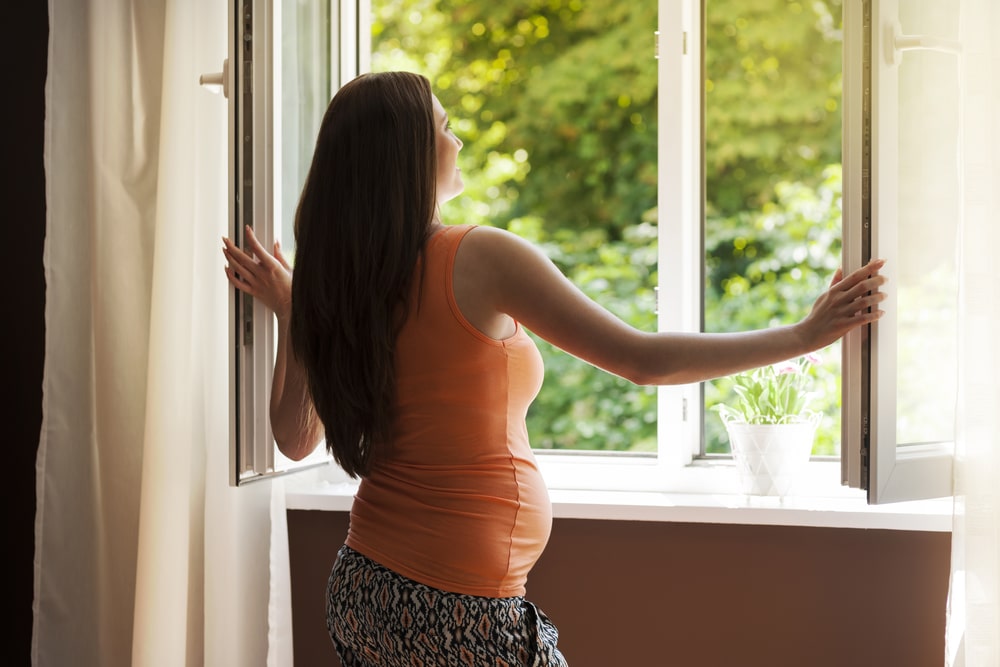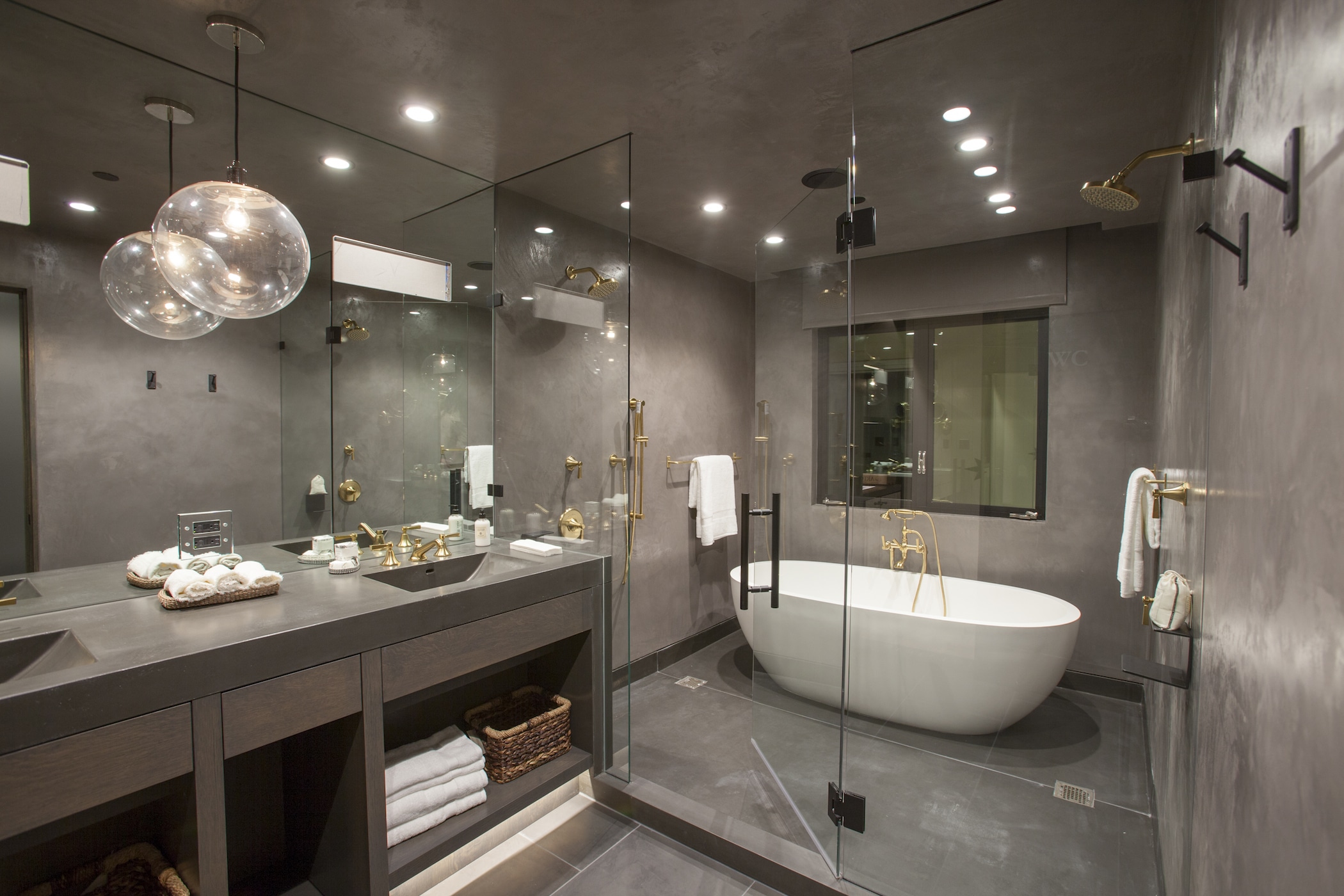According to the E.P.A, there is such a thing as “sick building syndrome.” This means just what it sounds like – the building you’re in can have such poor air quality that it is literally making you ill. Being that they also report that we spend ninety percent of our lives indoors and that air quality is much worse inside than outdoors, (even in the most industrialized cities) it is apparent that we need to be very concerned about the air quality in our homes. Whether you’re building your dream home, remodeling an old one, or just want to do what you can to remove pollution from the interior of your house we compiled the ultimate healthy home building and remodeling checklist so you can make sure your home is a safe and healthy place for you and your family.
#1 Location, location, location
Where you choose to live is an incredibly important first step to creating a healthy home. Take the time to research cities with low air pollution levels, quality water, and a clean site before settling on a location. Ultimately, if you take all this time and effort to make the inside of your home pollution-free, then you should be able to open your windows without worrying what toxins you’re letting in. Check out the EPA’s AirCompare tool to look at the differences in air quality between counties and the most unhealthy times of the year. Taking a look at the noise level in the neighborhood that is caused by a twice-daily rush hour or constant airway traffic noise is also something to take into consideration. Start off on the right foot by taking into account the pollution levels outside, before delving into the indoor stuff.
#2 Make it airtight
Building a home that is super sealed from the get-go or remodeling with airtightness in mind is key to a healthy home. Not only does an airtight home keep out external pollution, but it gives you more control over your indoor air. Your ventilation system will work better and more efficiently, your home will be more comfortable, and it reduces condensation (leading to building damage and mold). Besides contributing to an overall plan for a healthy home, it can dramatically impact the energy efficiency of your home – a very green plus. An extra perk? Better sound insulation for those in noisy areas.
#3 Good ventilation system
Speaking of airtight, this means you’ll need a proper ventilation system to ensure that fresh air gets brought inside, despite how sealed up your home is. A whole house mechanical ventilation system is necessary if your home is this airtight, but even if it’s not, clean airflow and efficient air filters are vital to developing a healthy home. By doing so, you can reduce condensation, allergens, radon, and the impact of VOCs.
#4 Avoid depressurization
Although we strive for an airtight home, it’s important not to let it become a depressurized zone. This can happen in airtight homes when you turn on an exhaust fan, and air gets sucked out, creating a negative pressure inside. Negative pressure can literally pull in toxins from outside (radon, pesticides, allergens, etc.) and can be especially harmful if you have a wood-burning fireplace or stove, as it can pull the smoke inside. A make-up air system (to replace the air being sucked out) can alleviate this issue and help you on your way to better indoor air quality.
#5 Say no to harmful chemicals
What you build, insulate and furnish your home with can be a major player in the health of your home. Many conventionally manufactured materials contain some pretty nasty chemical that you should be aware of. For example, paints/finishes may contain VOCs, wood products might have formaldehyde, and vinyl is often made with phthalates. These chemicals can cause really serious health effects, but luckily, there are more and more companies out there who are committed to giving you chemical free options – at no greater cost! Keep your eye out for credible certifications to be a truly informed buyer and know exactly what you’re putting in your home.
#6 Select paints that reduce indoor toxins
So in addition to specifically avoiding products that emit harmful gases and chemicals, you can now go a step further. Companies like ECOS Paints, Boysen, and Sherwin Williams carry certain paints that literally filter the air in your home. How? Boysen, for example, uses titanium dioxide in their paint to create a chemical reaction that neutralizes free radicals. These paints work to reduce indoor odors, inhibit the growth of mold, and suck up VOCs emitted from carpets, cabinetry, and other sneaky sources. Instead of being the cause of VOC emissions, these amazing paints positively impact indoor air quality.
#7 Ditch your old carpet
Ah, carpet. The new stuff that off-gases VOCs, and the old stuff that traps bad odors and allergens like dust, pollen, and pet dander. If you like the feeling of carpet under your feet, you should use a super efficient vacuum with HEPA-filtration to suck up as much dust and dirt as possible. If you’re buying new, go for a chemical-free kind, and recycle your old carpet through the Carpet America Recovery Effort’s drop off locations or through your city. Better yet, just forgo carpet altogether and replace it with a sustainable hardwood, cork flooring, or bamboo. Do your research, though, as not all flooring is created equal regarding health and sustainability.
#8 Test for radon
Radon is an odorless, natural radioactive gas that’s often found in rock, soil, and water, and can leak into your home. Depending on where your home is located, you may have radon levels that could be harmful. Radon is the second leading cause of lung cancer, right after smoking, so it’s important to investigate your home’s levels. Do a simple home radon test, and if the results come back high, then you’ll want to consider adding a radon vent to funnel the harmful gas up and out of your home. This procedure isn’t terribly expensive, but it’s certainly worth it to fix!
#9 Install (correctly) carbon monoxide detectors within 15ft of bedrooms
This might sound simple, but having correctly installed, working carbon monoxide detectors can be a true lifesaver. You wouldn’t leave fire detectors out of the equation, would you? Same goes for carbon monoxide detectors. This odorless, fatal gas accounts for over 20,000 ER visits in the U.S. per year, so don’t let that be you or your family! For the best placement, put detectors within 15 feet of all bedrooms, since that’s where you spend a significant amount of time. Cheap, precautionary measures like this can make a huge difference in the overall health of your home and family.
#10 Connect with nature
Bringing the natural world indoors isn’t as concrete a step as those listed above, but it’s equally as necessary. Studies have shown that the more time we spend in nature, the better our wellbeing is. So while you should certainly do your best to get outside and have some real contact with nature, there are ways to bring it inside your home and reap the benefits. Try placing air-purifying plants around your home, especially in places you spend the most time, like your bedroom. A study from NASA shows that certain plants can remove chemicals like formaldehyde and benzene from the air, so go pick out a few of the leafy greens for your space. On top of putting greenery in your home, getting plentiful natural light is also beneficial to your health, as it encourages the production of “feel good hormones” and can relieve stress. Strategically place lots of windows in your new home or follow these tips to maximize your existing home’s natural light.
These ten checklist items will help you build or remodel your home to make it a healthier place for you and your family to thrive. No way should your home be the cause of illness – instead, it should be a safe, clean place for you to live comfortably.






